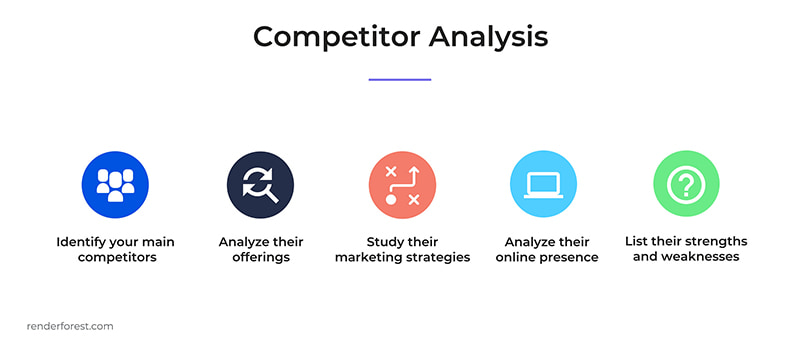
AI
On social media, it’s not the one who works hard that wins, but the one that works smart.
Social media marketing has become an inseparable part of every marketing strategy. Even though social media has millions of users, businesses struggle to get the attention of their audience.
The most interesting part here is that those who promote a business are also the target audience of another business. As a user, you’re well aware of how people react to social media promotion and ads. And, as a marketer, you should use that knowledge and try to avoid the mistakes that other businesses make.
To succeed on social media, you should keep up with all the trends and follow the best practices of social media platforms.
In this article, we’ll define what social media marketing is and will speak about its 4 important components that will help you optimize your social media presence.
Social media marketing has many different definitions that complement each other. Here’s a combined definition that summarizes all of them:
Social media marketing is a type of digital marketing that includes all the activities a business does on social media platforms to reach its target audience and achieve its long-term and short-term goals.
These activities include creating different types of marketing content tailored to the needs of specific audiences. Your business goals may be to increase brand awareness, improve your brand image, generate leads, and drive sales. Using different social media sites can help you achieve these goals.

What are the benefits of social media marketing? With the right strategy, social media can work wonders. Let’s list some of the benefits of social media:
Why is social media important for your business? There are many social media platforms out there that can bring you measurable results. Whether you succeed or not, depends on the type of your business and the strategy you use.
If you think that social media is not the right place to promote your business then you’re most probably using the wrong platform, or you should improve your social media strategy. Read on for more social media marketing tips and learn how to get the most out of your social campaigns.
While social media advertising campaigns help to reach a more specific audience, it’s important to choose the right platform and have a more narrow audience to address their pain points.
Before initiating any social media marketing campaign, first, answer the following questions:
These questions are the cornerstone of your social media marketing strategy and your overall marketing plan. The answers to these questions will give you direction, and you can further plan your campaign.
Now, let’s see what you should include in your strategy.

When launching any kind of campaign, you should measure its success. How to do it? By setting measurable goals.
Social media is no exception. To understand the effectiveness of your social media strategy, you should set goals and objectives. Your goals may include increasing the number of your followers, boosting engagement, attracting more traffic to your website, new customers, and so on.
But how to make your goals measurable? Make them SMART.

Here’s what a SMART goal will look like:
These examples are Specific (increase the number of followers, drive traffic), Measurable (10%, 20%), Achievable, Realistic (may be based on historical data), Time-bound (2 months, 6 months).
Having certain goals and objectives helps you concentrate on the important tasks and priorities, find new ways to achieve your goals, and keep your social media team motivated. It’s important to mention that your social media marketing goals should be aligned with your business goals.
Another must-have point in social media marketing strategy is your audience. If you don’t know who your target customers are, you can’t reach them and achieve your goals.
Defining and adding your target audiences will help you and your team concentrate on attracting a certain audience which will maximize your results and bring in more qualified people interested in your product or service.
And, more importantly, knowing your audience will help you create compelling content that will resonate with social media users and encourage them to interact with it (likes, comments, shares).
On social media, you’re going to face tough competition.
As the attention span of the users decreases, it’s getting harder to impress them and be memorable. Especially when your competitors are trying their best to get the attention of your target audience too.
This is when competitive analysis comes to help.

Knowing your competitors will give you the advantage to learn from their mistakes and improve your social media marketing strategy.
Check all the social media accounts of your direct competitors to find out:
Collecting all this information is not enough, you should act on it. Besides, this is an ongoing process as social media trends and user preferences rapidly change.
Now, how to choose the best social media platforms for marketing your business?
When you complete the previous steps, you’ll have enough data to rely on while choosing social media sites. Choose the platforms that:
These platforms overlap in 90% of cases. If your competitors target the same audience, then they are already trying to attract their attention on the platforms they are active on. The other 10% is when your competitors are using new platforms as a testing ground.
But, you can always try to reach your potential customers on other popular platforms with your unique approach.
Recommended Reading
When it comes to metrics, you need to add them based on your goals.

The most common set of metrics that are tracked on social media are:
Avoid tracking vanity metrics that might be satisfying but don’t really contribute to reaching your goals and objectives.
These were the 5 main points that should be included in your strategy. Like I’ve mentioned before, there’s science behind every social media campaign. And now you’re becoming more aware of all the possibilities that social media has to offer.
After finalizing your social media strategy, you should start planning your content strategy, creating content, and publishing.
Do you plan your posts on social media platforms? If not, then it’s high time to start.
Planning your social media campaigns based on your goals and objectives will help you stay on track. Besides, it will give you time to come up with creative post ideas and content.
Most marketers keep a social media content calendar and plan out their content beforehand.

Your social media calendar should include all the necessary information about your social posts. This includes:
Even if you plan your posts on social media channels for a week or even a month, remember that your calendar is a versatile document that can be adjusted if needed. There are always some trends that may arise or events that can be covered, so you’ll need to edit your calendar accordingly.
Refer to your calendar as a document where you can brainstorm ideas, monitor your progress, find more inspiration from your old posts, prepare your social media graphics beforehand, and whatever you wish to use it for based on your priorities.
When it comes to publishing your posts, you can use the native scheduling tools of social media platforms, or use other social media marketing tools like Facebook video templates to get it done. One of the benefits of social media management tools is that you can connect multiple platforms and get valuable insights into their performance. When you have your calendar all set up, all you’ll need to do is just copy and paste your content like you’ve planned it.
Recommended Reading
When you’re on social media, you’ll get both positive and negative feedback from users. Everything is public, and everyone can share their opinions online without hesitation.
This is why you should always be aware of what they say about you. Moreover, you should have a set of responses prepared for any situation, for example when you need to reply to a negative comment or post about your company.
Social listening should be an inseparable part of your strategy.

Once you become active on social media, you’ll notice that people start to notice you and engage with your content. And your task is to monitor all the social media conversations around your brand and respond to them.
This can be done both manually and with the help of social monitoring tools like Hootsuite, Buffer, BuzzSumo, etc. Within time, you’ll gather valuable information about your audience.
The question is how you’re going to use the gathered information. If you analyze it and learn more about your audience, you can improve your social media marketing plan and make it more effective.
Create Outstanding Visuals for Social Media
So, you’ve finalized your strategy, created a social media content calendar, created your content, and started sharing it on social media. Now what?
Here comes one of the crucial parts of social media marketing: analyzing and improving.
This brings us back to our strategy, where we’ve set our main goals. Data analysis shows us how close (or far) we are to reaching our goals. Having this data at hand will help you optimize your social media activities, make them more efficient, and maximize your ROI.

Most social media platforms have in-built analytics tools that provide you with the data about your audience, the performance of your posts, and engagement. But if you want to collect all that data in one place, you can also use the automated social media monitoring tool.
If there are many stakeholders involved in your marketing strategy and implementation, you need a way to share all the gathered information and your results with them. Visualizing your data is the best way to present it.
You can do that with the help of infographics or a simple but comprehensive presentation.
To Sum Up
In this article, we’ve tried to bring clarity to the complex world of social media networks and digital marketing. Even though at first glance it seems to be overcrowded, you still have a chance to break through the noise and get noticed.
Social media advertising can be effective if you do it right. So, having a clear strategy is a must, otherwise, all your hard work and efforts will be in vain.
Plan beforehand, create content tailored to your customers’ needs, analyze the results, and make conclusions on how to improve your social media marketing strategy.
High-quality content plays a huge part in attracting the attention of your audience. It will encourage them to engage with your content and take the desired action.
If you’re not a designer, but in need of professional designs, click the button below to find hundreds of customizable social media graphics designed by professionals.
Article by: Renderforest Staff
Dive into our Forestblog of exclusive interviews, handy tutorials and interesting articles published every week!
Read all posts by Renderforest Staff

